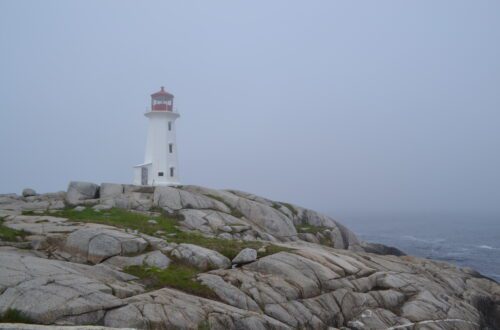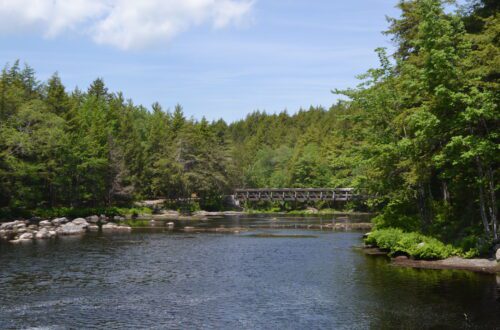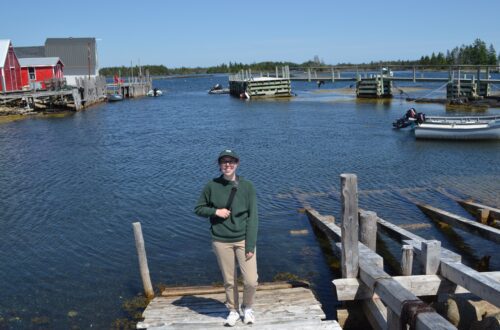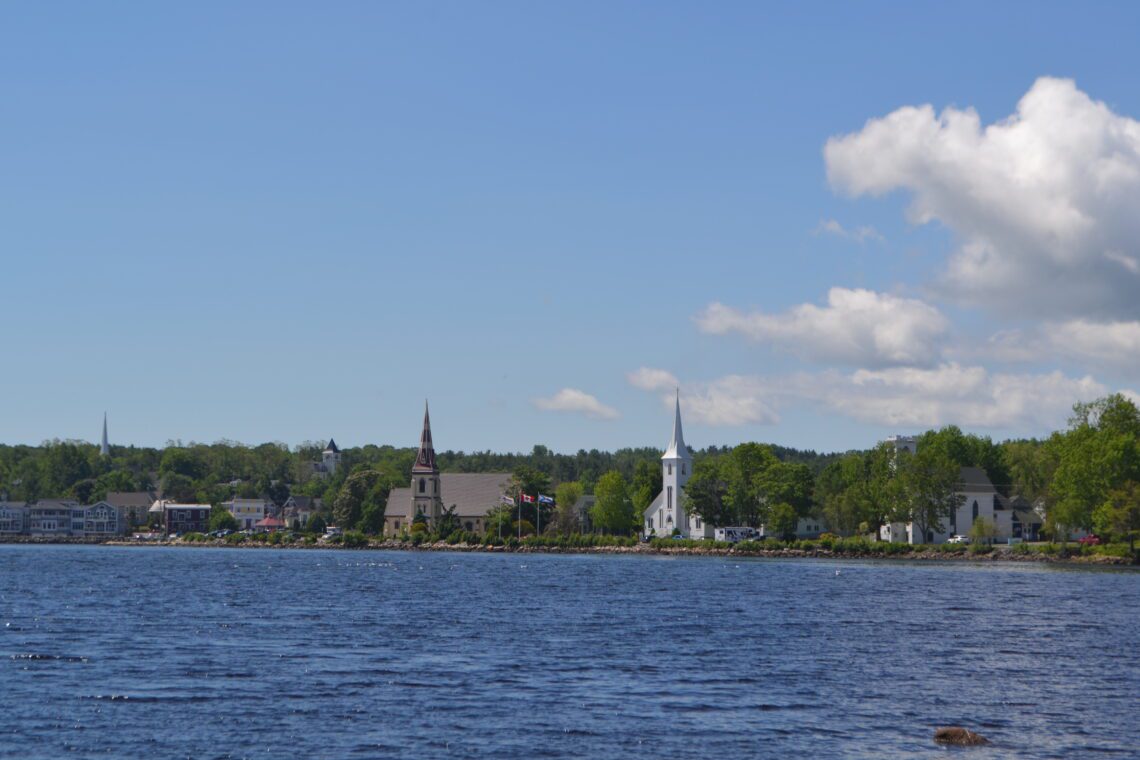
Small Town Canada Spotlight: The Three Churches of Mahone Bay, Nova Scotia
In another edition of Small Town Canada Spotlight, we’ll be looking at the iconic Three Churches that make for a stunning backdrop of Mahone Bay, Nova Scotia. The town receives thousands of visitors every year who want to get a glimpse of this famous silhouette across every season.
Mahone Bay, Nova Scotia, is a charming coastal town renowned for its friendly atmosphere, distinctive local shops, and breathtaking coastal views. The area was home to the Mi’kmaq before the arrival of European settlers from Germany, Southern France, Switzerland, and the Netherlands. Between 1750 and 1752, more than 2,200 “Foreign Protestants” moved from Europe to Halifax before ending up in the Mahone Bay region around 1754.
Mills were constructed at the mouths of Mahone Bay’s two rivers, and the abundance of lumber led many to pursue work as shipbuilders. The vast amount of timber and the water flow made it easy to transport logs to the sawmills, which produced first-rate lumber for shipbuilding. The community thrived in its new economic position, attracting many people to the area in search of employment. Many at the time turned to faith, which marked the beginning of the fascinating story of the creation of Mahone Bay’s historic Three Churches.
St. James Anglican Church
The Three Churches of Mahone Bay are an iconic backdrop to this gorgeous maritime town. Made up of the St. James Anglican Church, St. John’s Evangelical Lutheran Church, and the Trinity United Church, each parish stands proudly along the waterfront, symbolizing the town’s rich history, architectural charm, and deep-rooted sense of community.
In 1833, the four denominations — Lutheran, Methodist, Baptist, and Presbyterian — united to construct a Union Meeting House, where worship services were held for several years. As time passed and more people began attending, each congregation built its own separate church, starting with the St. James Anglican Church.
The site for St. James Anglican Church’s first building was donated by John William Kedy at the Mush-a-Mush burial ground and was approved by Bishop John Inglis in 1826. The place of worship was completed in 1833, located above Bayview Cemetery overlooking the head of the bay. The church was a galleried Georgian-style building, and its original pews were boards placed on heavy blocks of wood. The following year, upgrades were made to reduce drafts and improve comfort within the building.
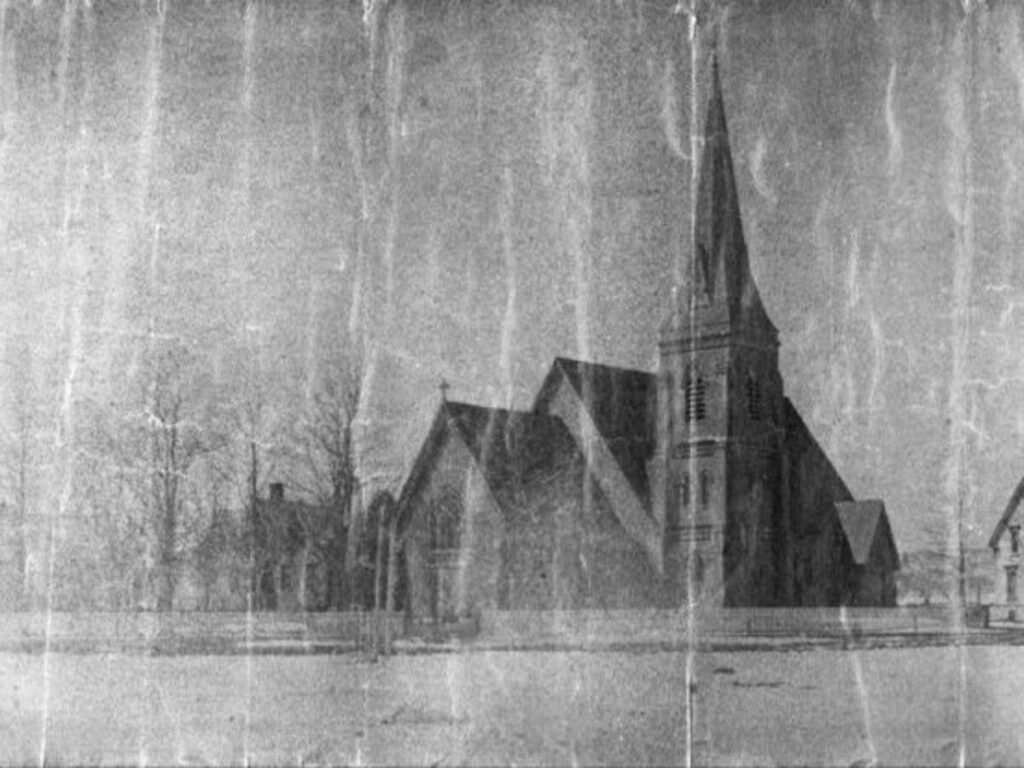
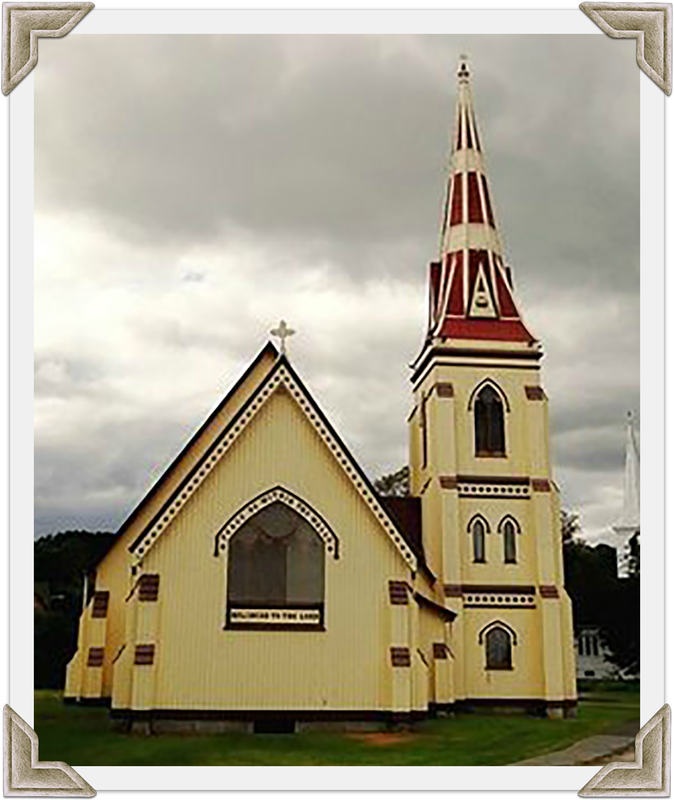
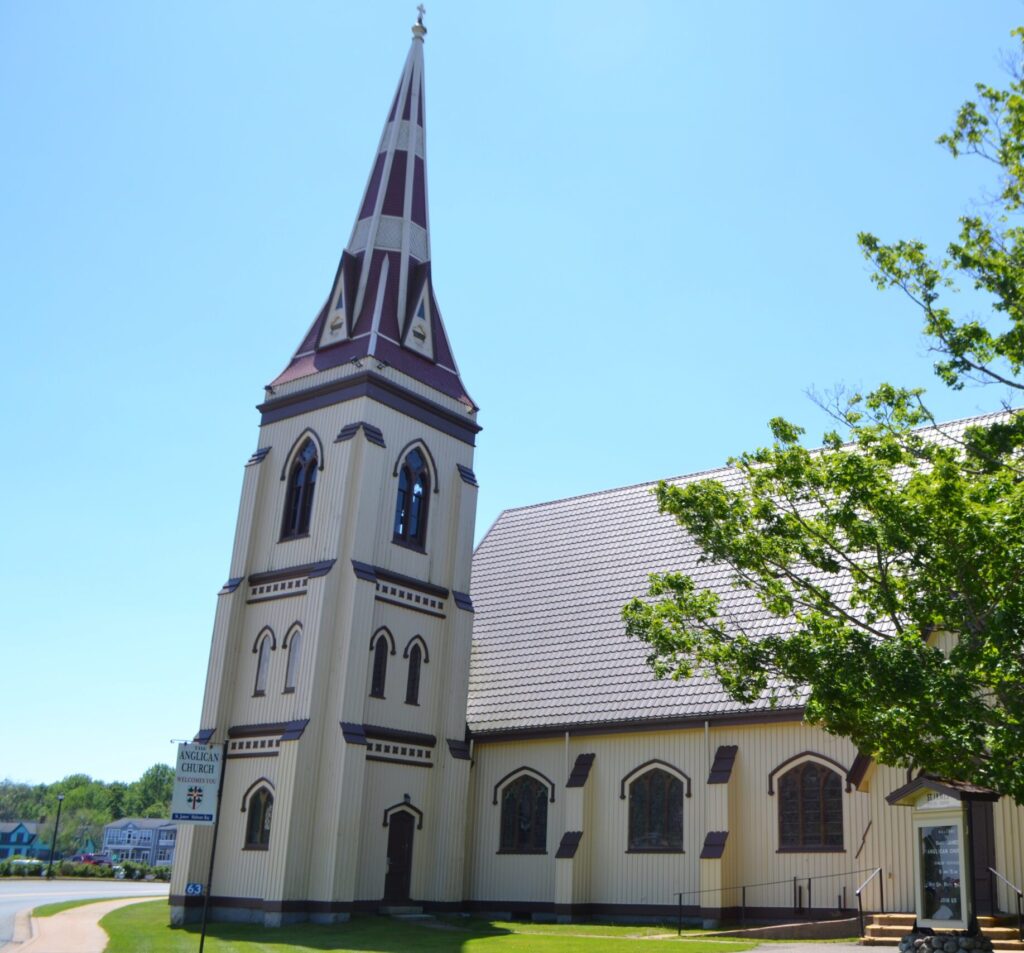
By 1835, the church was consecrated by Bishop Inglis, but it did not have its own priest until 1845 when Rev. J. Philip Filleul was appointed. Upgrades continued throughout the years, with the chapel being cut apart and greatly enlarged in 1858 and the square tower added. By the 1880s, the church was too small and in poor condition, so it was determined that building a new church at the bottom of the hill on Edgewater Street would be the best solution. This location is now the present site of St. James Anglican Church.
Rev. Ned Harris, who came to St James in 1884 as curate and became rector in 1889, led this major project. The new church was designed by Harris’ brother, William Critchlow Harris, an architect who had also designed several other churches throughout the Maritimes. Most of the work was done by volunteers of the congregation, and the final building was completed next door to St. John’s Evangelical Lutheran Church.
St. John’s Evangelical Lutheran Church
St. John’s Evangelical Lutheran Church was the second of the three churches built in Mahone Bay, but the first to be built on its current parcel of land. Founded in 1864, St. John’s has been an integral part of the community for 161 years, serving as a testament to Mahone Bay’s seafaring history and strong Germanic traditions.
Rev. W.W. Bowers of the Evangelical Lutheran Synod of Maryland was called in 1863 and served the large body of Lutherans, most of whom resided in the Mahone Bay area. St. John’s Lutheran Church was first fully organized as a District Congregation on June 6, 1864, when Nathan Kedy, Thomas Ernst, Phillip Aulenbach, Frederick Ernst, and James Hiltz were chosen as officers of the church.
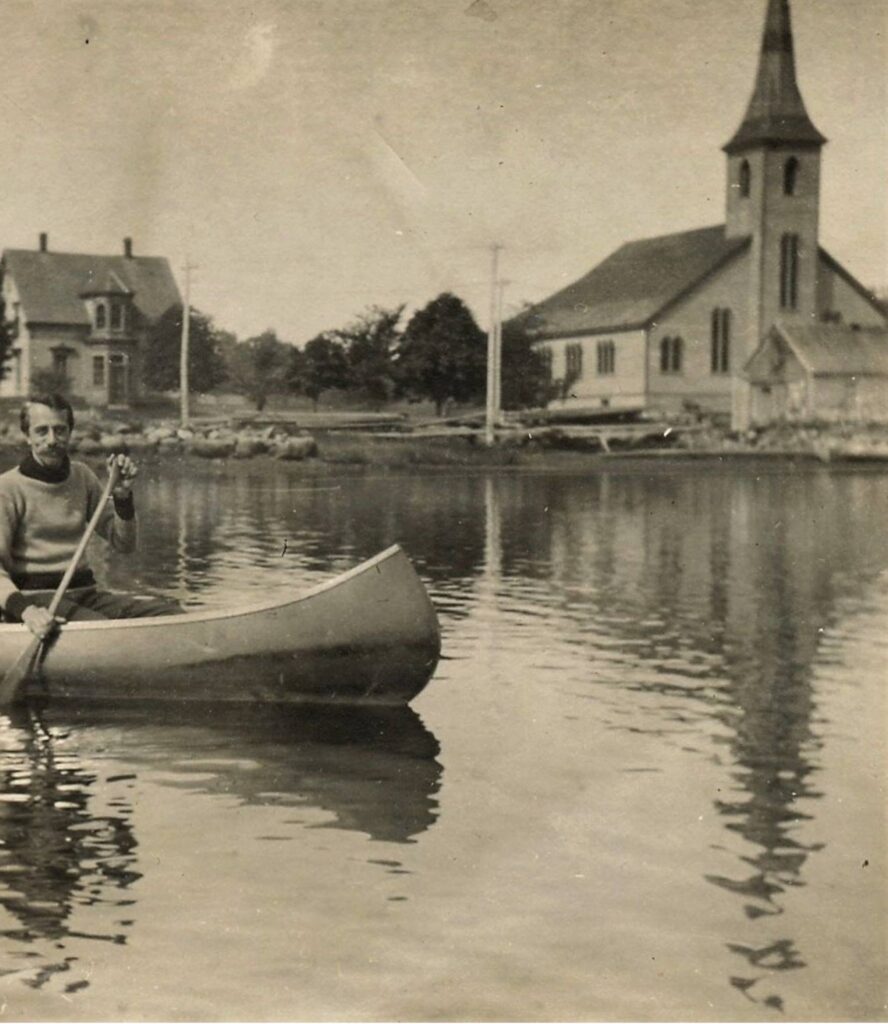
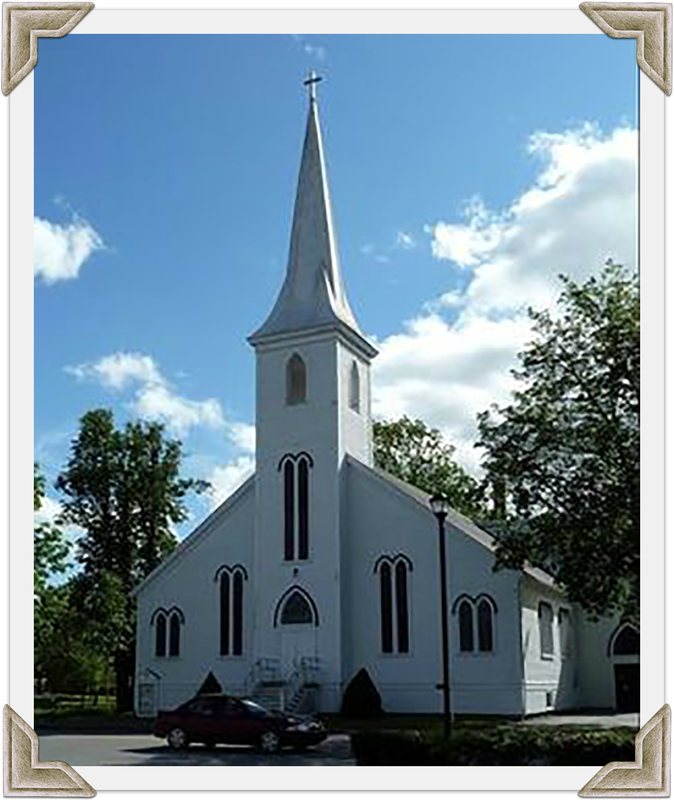

On October 20, 1866, a motion was made and carried out to erect a new Lutheran Church in Mahone Bay. The original church building was constructed “near to the water’s edge and was 38 feet by 50 feet with a 20-foot post, a gallery, and a graceful spire, furnished with a bell.” This marked the beginning of a tradition, with the Three Churches standing side by side along the shoreline— each representing a different denomination, yet together forming a lasting symbol of Mahone Bay’s faith, history, and maritime beauty.
In 1876, the first church records were kept in Mahone Bay. Previously, statistics had been recorded in Lunenburg along with their church records. The first baptism was for Minnie Maude Halimore on July 29, 1876, the infant daughter of William and Charlotte (Hirtle) Halimore. The first marriage was solemnized on March 3, 1877, and joined in Holy Matrimony James Alvin Eisenhauer, Newburn, and Eliza Jane Minnich, Petite Riviere.
St. John’s was also the location of the first place in Nova Scotia to display a Christmas tree, according to Wm. M. DesBrisay’s History of Lunenburg County, “On Christmas evening, 1876, the Rev. Mr. Scheffer with his Sunday School at Mahone Bay under the guidance of Rev. Mr. Roth, held a Christmas Festival with addresses from the Clergy of Conference, excellent music, and a finely illuminated and tastefully decorated Christmas tree, as far as we know the first in any Church in the Province. The Rev. Mr. Roth has cause to remember it for his house narrowly escaped being burned to the ground while he was with his wife attending upon it!”
Today, the church still operates out of its original building, with renovations being made as needed over the years, along with the addition of a Sunday School area, a pipe organ, and a wheelchair lift.
Trinity United Church
The last church to be built was the Trinity United Church. Established in 1925, Trinity United has a longer history in Mahone Bay than the historic building itself. While the Presbyterians built their church during the early 1860s, the building that is in use today is Trinity United Church. George Eisenhauer of Oakland was the Sunday School superintendent at the time and assumed the role of chief purchasing agent for the project. He would be sent to Halifax for the nails and other hardware used in the building, and the lumber was obtained from the local Keddy mill.
In 1885, it was determined that the church should be moved closer to the center of town. To do so, over the course of ten days, the building was lifted two feet from its foundation, placed on rollers, and hauled by horse approximately 400 metres down the hill to its present location on Edgewater Street. In 1894, the church was raised again to accommodate a basement hall.
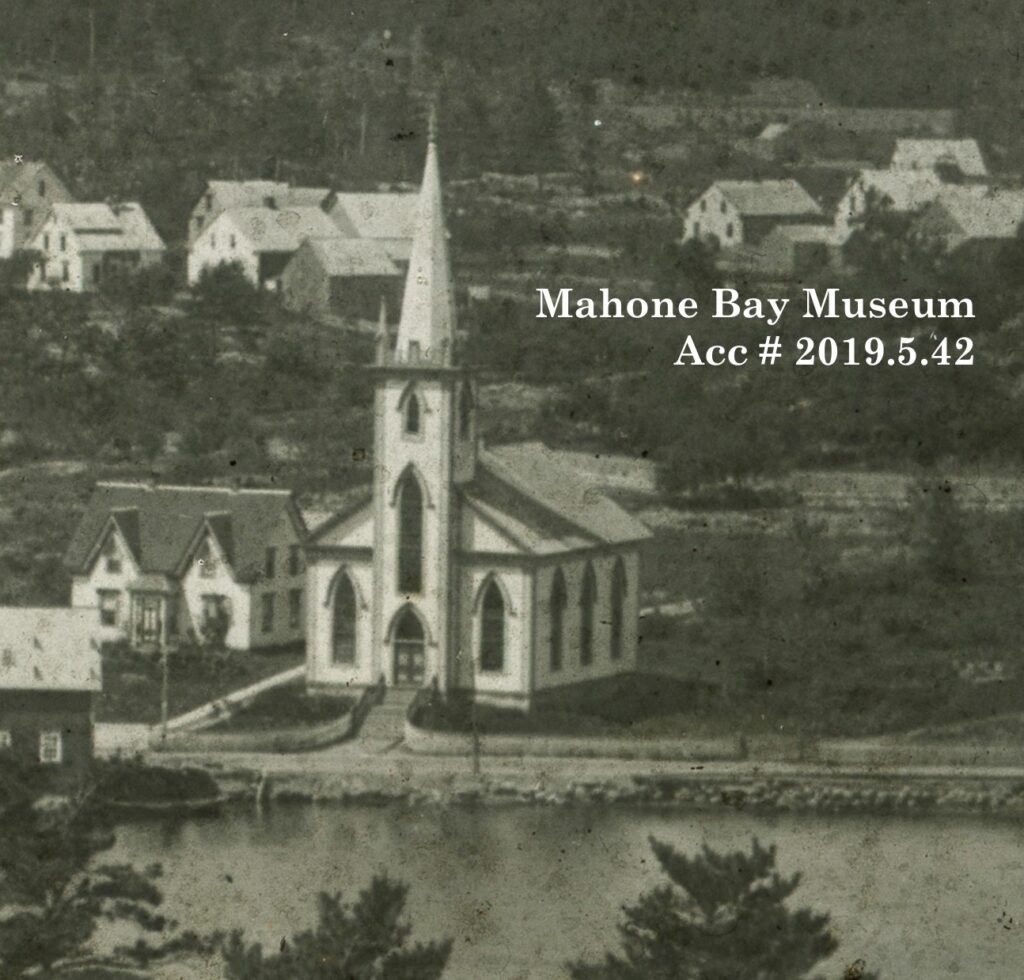

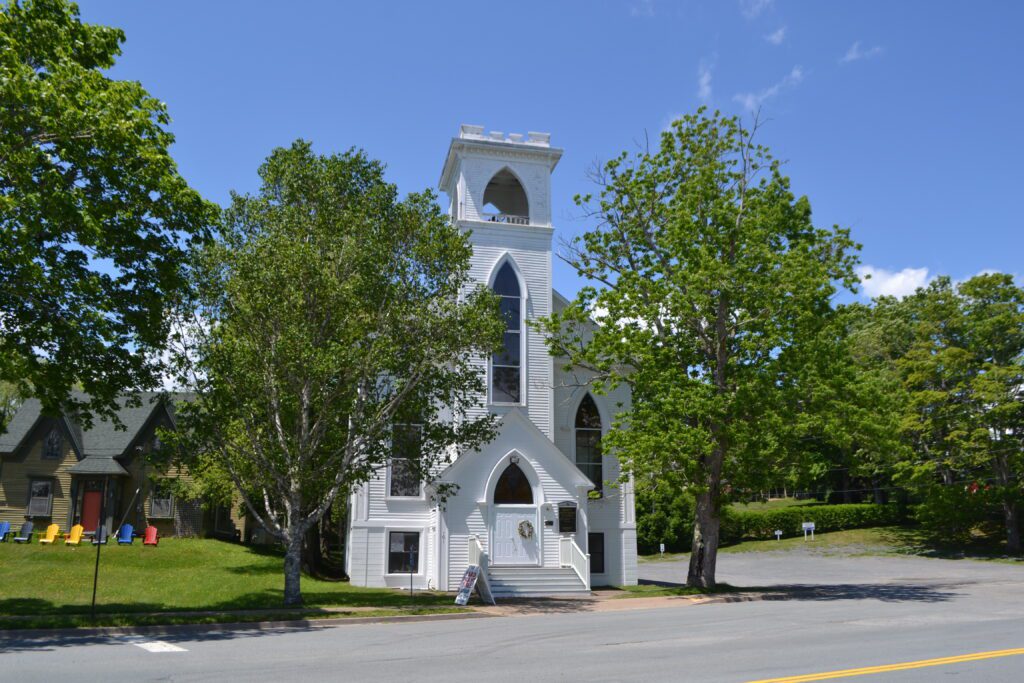
In 1925, the Methodists, Congregationalists, and most Presbyterians in Canada joined to form the United Church of Canada. This meant that in Mahone Bay, the Presbyterian and Methodist congregations combined to create Trinity United Church. The congregation decided to use the former Presbyterian church building for worship and other activities. The original Methodist building was used as a hall for a brief period before being demolished. At one point, the Trinity United Church had a steeple that resembled those of the neighbouring Anglican and Lutheran churches, but it had to be torn down in 1926 because it was unsafe after decades of storm damage. The repair bill was deemed to be too high, which is why the congregation chose not to replace the spire.
A few other additions to the church occurred in 1947 and 1967 when the United Church congregation purchased and dedicated a memorial Casavant pipe organ, as well as added a hall and Sunday School rooms. The cost of the pipe organ was a whopping $5,075 at the time, but it was seen as a popular move, as the instrument was paid off a month after the dedication.
The Three Churches of Mahone Bay stand today as one of the most treasured views in all of Canada. Their striking presence not only defines the town’s skyline but also tells a story of faith, community, and enduring coastal heritage.


